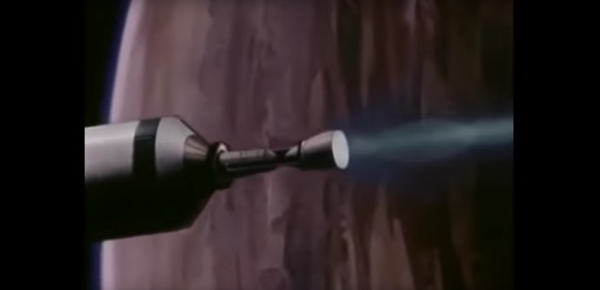In the 1950s, NASA was just getting its footing. It became a new agency in 1958, launching its first satellite, Pioneer 1, later that year. But even at that time, the agency had big, ambitious plans brewing, including a feasibility study on using nuclear powered engines to get to Mars.
Indeed, a similar idea gets tossed around every few years, though skittishness about nuclear power has made anything beyond a few nuclear powered (but not propulsed) space probes still the stuff of speculative fiction. At one point, it was being actively explored under Project NERVA (then called Project Rover), which is what this video is based off of.
It’s a fascinating, and fascinatingly complex, system, using nuclear technology to make for a faster trip to Mars, and using chemical rockets for orbital insertions, deceleration, and atmospheric re-entries. You can see a bit of it in the below excerpt from Nuclear Propulsion In Space, a 1968 educational film from NASA about the project. (You can also watch the full video here.)
The engine itself was eventually built and tested, but never flown. The expensive project eventually fell out of favor, and NASA was never able to realize those early Mars ambitions. A loose mission concept hopes to get us there in the next 20 years, though funding has thus far not been adequate enough to keep it much more than a concept. Who knows, though. Maybe, someday, something like Project NERVA could become a viable solution to space travel.
And if Mars is too old hat at that point, I hear Enceladus has some lovely geysers.










